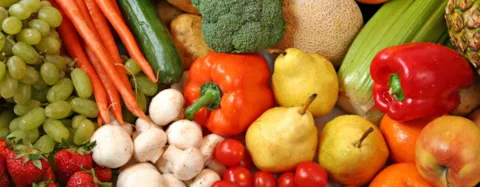Taking a structured approach to dramatically reduce food loss and waste
It is an astonishing fact that almost one fifth of all food available to consumers globally is wasted, but a structured approach as detailed in the upcoming ISO 20001 standard could help companies significantly reduce unsustainable food loss and waste.
The one fifth figure for food waste is an estimate by the UN Environment Programme (UNEP) and it is vitally important. According to the humanitarian charity organization Action Against Hunger more than enough food is produced in the world to feed everyone on the planet, yet 733 million people still go hungry every day.
Businesses and organizations along the food supply chain may be unable to do much about hunger caused by war and natural disasters, but they could make an impact on food loss and waste by adopting a structured approach to address the issue in their own operations and value chain. Such an approach is set out in the new ISO 20001 standard which is currently under development and anticipated to be released in 2027.
There is a requirement already in use under FSSC 22000 Version 6. The FSSC 22000 guidance document on food loss and waste puts the issue in context specifically with UN SDG 12 (Sustainability Development Goal). It also includes references to various sources that puts the losses due to food loss and waste as being in excess of USD 1 Trillion annually. It clearly sets the context of food loss and waste having clear sustainability and as well as economic impacts. However, the notion is that companies could benefit for more guidance is needed for the industry to make a significant dent in the current food loss and waste.
What is food loss and waste?
In order for businesses to reduce or eliminate food loss and waste it is important to distinguish what is what.
Food loss is defined as occurring before the food reaches the consumer and is caused by factors such as production and processing or during storage and distribution. It can occur anywhere along the supply chain and can be as simple as leaving some crops in the ground or produce falling from trucks to the visual quality of produce (blemishes, etc) may make it unsaleable. Another example is poor storage conditions may render food unfit for human consumption or low yields in the transformation processes, production errors and scraps or failure to determine value of reusable by-products.
Food waste on the other hand refers to food that would be fit for human consumption but is consciously discarded by retail outlets or the consumer themselves. This may be due to expiry dates on products, size of packages or portions or simply poor logistics practices such as over-ordering by retailers or consumers deciding not to eat a product they have purchased.
DNV’s recent ViewPoint survey showed that companies are trying by using it for animal feed including pet food, donations to food banks for consumption by humans, composting or where possible by repurposing into other food products. Destruction into landfill is the least attractive option from a sustainability perspective and according to the DNV survey only 12% of food is disposed in this fashion.
Structured approach to minimising food loss and waste
Most businesses involved in the food chain from farms to retailers and restaurants have invested time and effort in implementing food safety management systems. Sometimes that may be to comply with local regulations, but mostly it is because it is a ticket-to-trade or due to the economic and reputational enhancement that comes from building trust in your food safety performance.
Food loss and waste is not comprehensively addressed in the food safety management system standard, although it is mentioned in the FSSC 22000. Nor is food loss and waste likely to be the subject of major regulation even if there may sometimes be connections such as in setting ‘use by’ dates for products to minimise food safety risks.
The upcoming ISO 20001 standard employs the same High Level Structure (HLS) as most of its other standards and so will not be unfamiliar to companies already compliant with an ISO standard.
A food loss and waste management system can help companies by providing a structured framework to:
- Accurately identify and measure food loss and waste across the value chain.
- Establish clear targets and objectives for reducing food loss and waste.
- Adopt best practices and standardized procedures to minimize waste.
- Continuously monitor progress and report on achievements, enhancing transparency and accountability.
- Improve overall efficiency and reduce costs associated with food loss and waste.
- Contribute to broader sustainability goals and improve ESG performance.
A significant fact pulled from the Viewpoint survey is that among large companies, 32% say that more than 60% of food loss and waste could be avoided and 35% of leaders say the same. This is great news as it seems to be an awareness that there is a potential – and for some a substantial one – to reduce the current food loss and waste generated by the industry and while the current ISO 22000 standard outlines the process for identifying hotspots where food loss and waste occurs, this will be reinforced in the upcoming ISO 20001 standard together with a framework to proactively address food loss and waste to the benefit of the company and the planet.

